Dive Training Blogs
Deptherapy returns to its Roots – Part 1
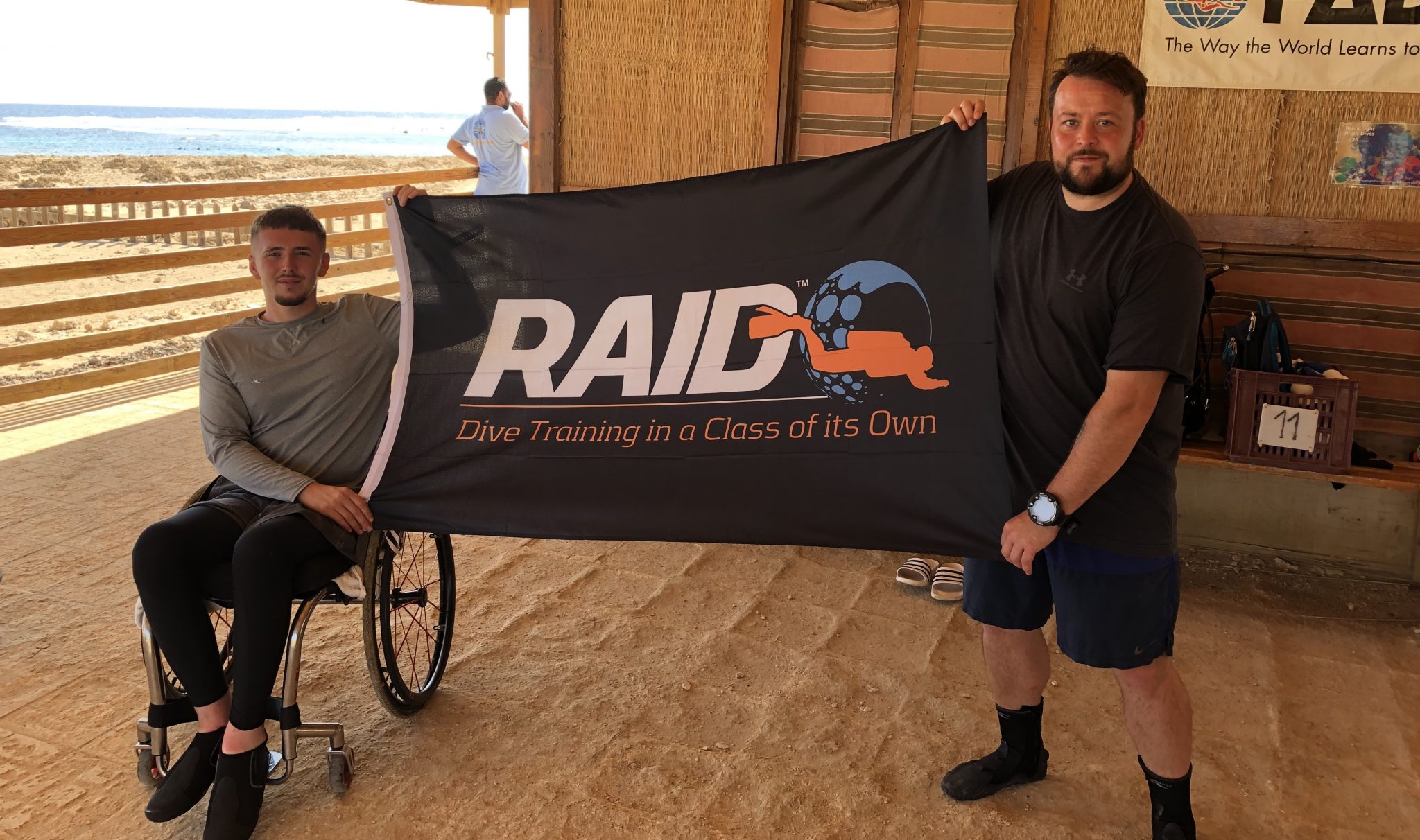
Over the next seven days, join Richard Cullen from Deptherapy as we publish a Blog about the charity’s recent expedition to Roots Red Sea, El Quseir, Egypt.
Deptherapy made the very brave decision to book an expedition to our home in Egypt as soon as Roots Red Sea received their certificate from the Egyptian Authorities that the camp and dive centre was COVID secure. Roots is one of very few resorts to receive a certificate from the Egyptian Government.
We arrived in Roots the day after they re-opened.

Getting together an expedition was a major task. Very few Approved Medical Examiners’ of Divers or Dive Referees are conducting consultations at the moment. Availability of beneficiaries and the requirement to quarantine on return from Egypt affected the number of beneficiaries available.
There was also a requirement to pass a COVID PCR virus test within 72 hours of travelling.
We had decided on a small expedition and on the day of travel we had six flying to Egypt. Unfortunately, Chris Middleton had to drop out the day before we travelled after emergency wisdom tooth surgery.
Our group comprised of Richard Cullen, Michael Hawley, Tom Oates, Tom Swarbrick, Keiron Bradbury and Corey Goodson. Keiron was undertaking his RAID Master Rescue Course and, as it turned out, Corey was undertaking the RAID Open Water 20 course.
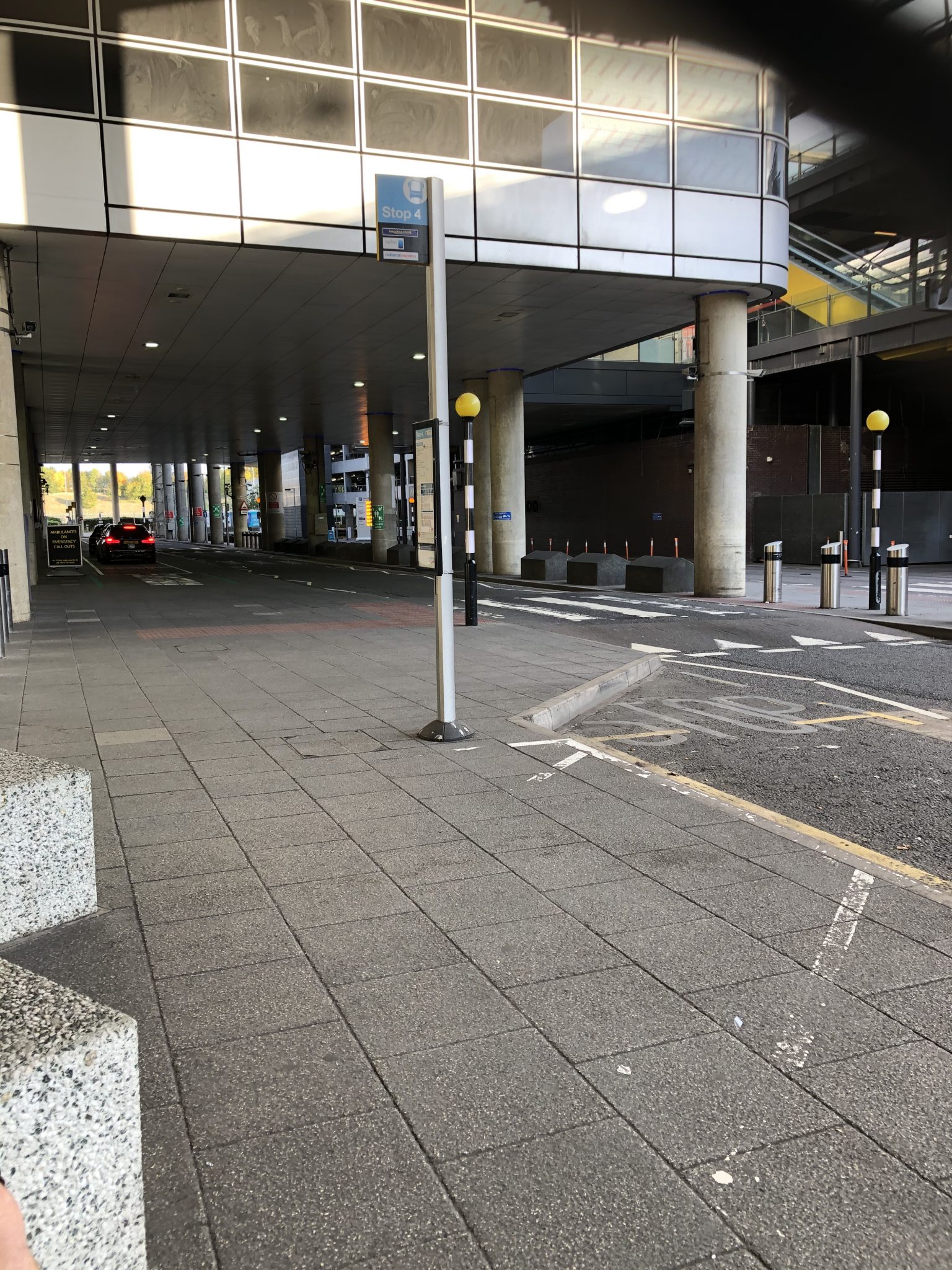
A deserted Gatwick Airport at 0900 on 10 October
Our outbound flight was before midday on Saturday 10 October and I must admit we were all shocked at how deserted was. Checking in with easyJet took minutes and when we boarded the plane, we found it less than half full.
Corey is a paraplegic since a car accident two years ago while he was training prior to joining the Royal Anglian Regiment. Corey has no sensation below the waist and is unable to use his legs. The cabin crew on our flight were quite amazed to see the two Toms and Michael lift him from his wheelchair and place him in his seat for the flight.
Mask protocols were strictly observed by the team, the flight was uneventful, and the easyJet Cabin Crew superb. We also took a digital thermometer to check temperatures prior to flying.
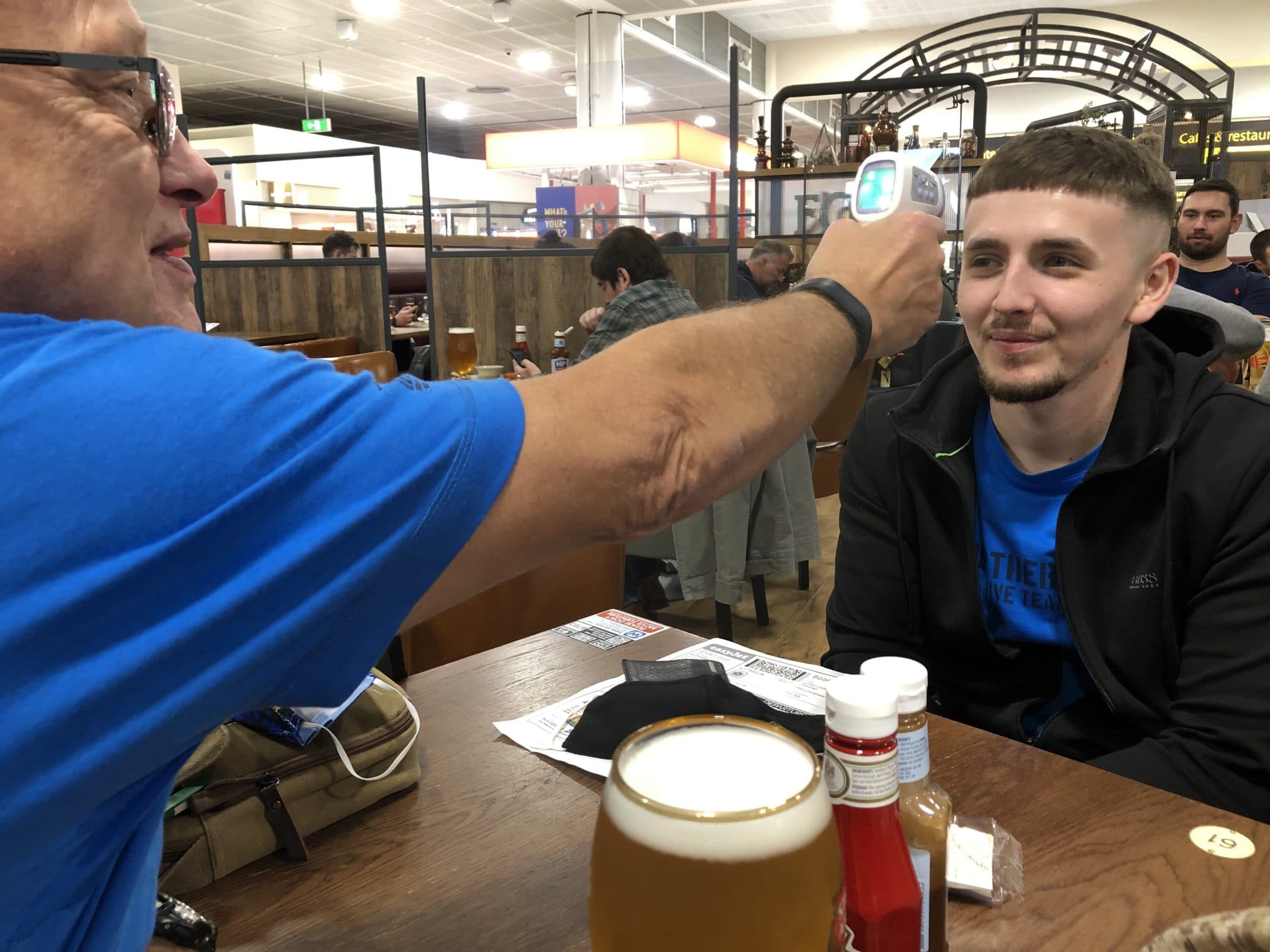
Corey having a pre-flight temperature check
Hurghada Airport was very quiet and we moved through Immigration and collected our baggage in very quick time.
Two things to note: If you are travelling to Hurghada you need to complete a COVID declaration for the Egyptian Authorities. If not, you have to fill out the rather lengthy form when you arrive. You can undertake a COVID test on arrival at Hurghada Airport but the queues are long. It costs much less than the tests we had done in the UK – BUT – you are required to be quarantined at your hotel until the test result comes through. This means two days with no access to resort facilities. If the test comes back as positive you have at least two weeks being confined to your room.

COVID guidelines
Transport to Roots was, as ever, on hand and we were soon at the camp and being briefed about the COVID arrangements. A lot of work has been put in place to make Roots COVID compliant – and all at considerable expense.
None of the usual hugs with the Roots team and you have your temperature checked every morning and every time you return from the dive centre. Your dive kit is sterilised every night ready for the next day’s diving.
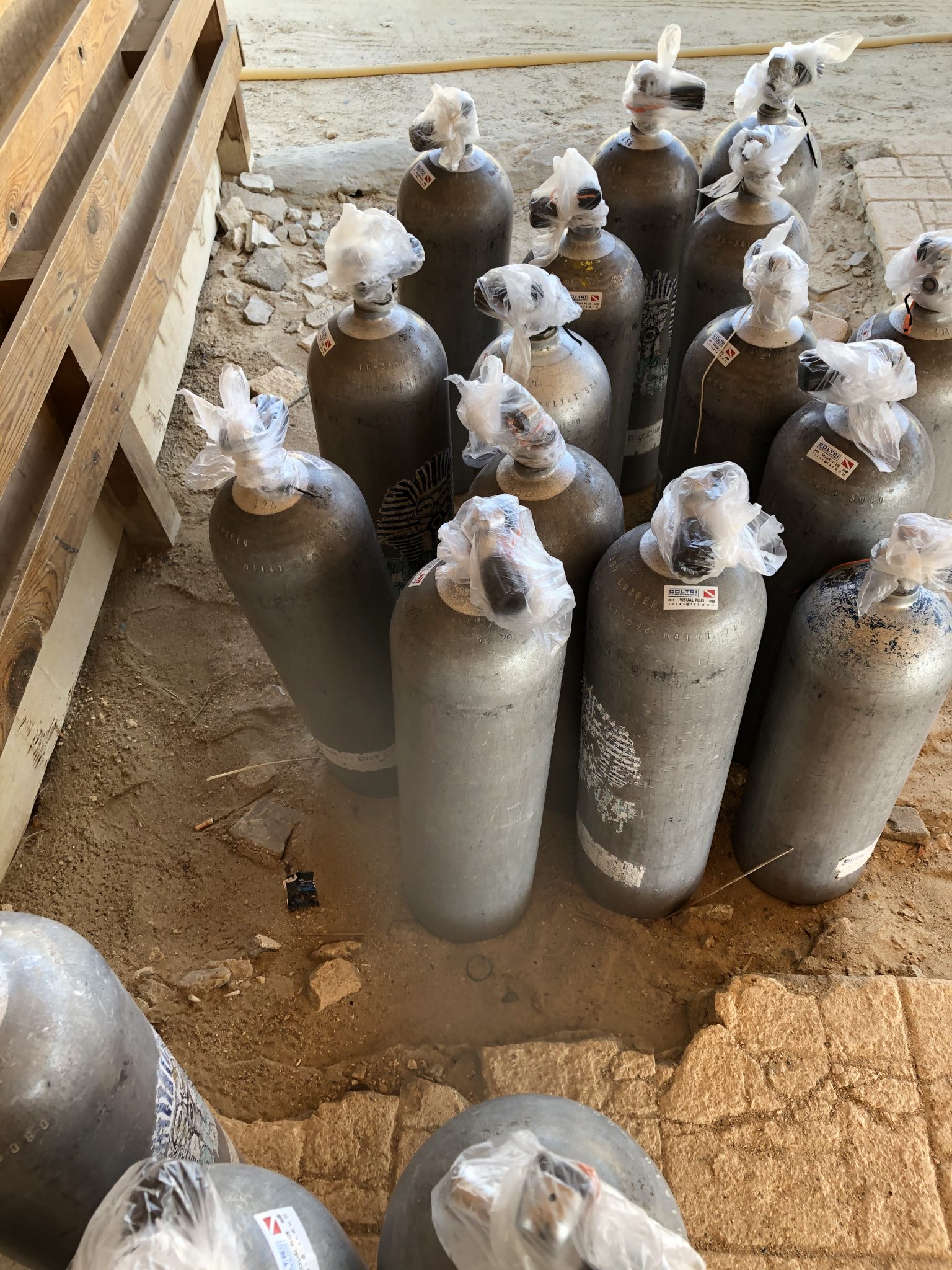
Sterilised Dive Kit
We all felt very COVID secure.
Check back for tomorrow’s Blog and our first day diving…
Find out more about the work of Deptherapy and Deptherapy Education at www.deptherapy.co.uk
Blogs
Wrecks’ Curse – The World of Wreck Diving
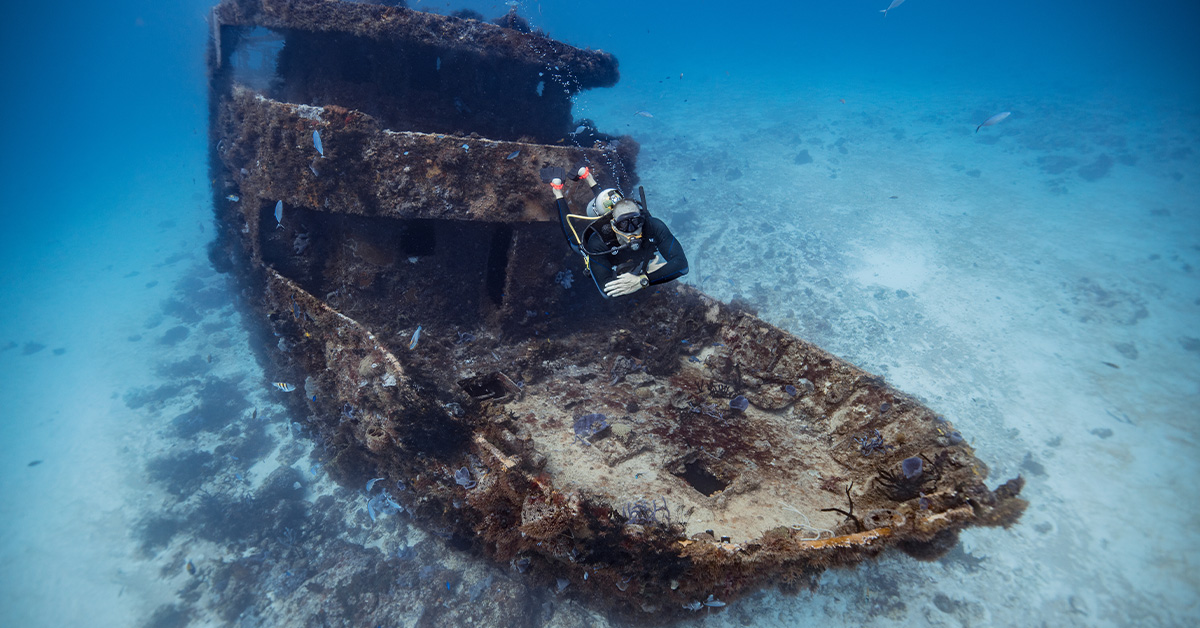
By Pablo Mir
We all enjoy those unexpected encounters that come with wreck diving, no matter how small, during our open water scuba dives. Exploring those nearly vanished remains of a ship scattered across the ocean floor is frequently the climax of the otherwise regular dive.
What is Wreck Diving?
Wreck diving involves exploring underwater shipwrecks while scuba diving. Sometimes, the wreck we encounter is more than just the remnants of a small and forgotten old vessel. Or perhaps we didn’t deliberately choose it, but the charter we boarded had that destination planned that day. The Benwood, less than 14 meters or 45 feet deep, in the clear waters of the National Marine Sanctuary in Key Largo, Florida, or the Copenhagen of Fort Lauderdale, also Florida, are good examples. Divers, many beginners who haven’t even devoted half a second to thinking about wreck diving, enjoy exploring their remains and the fauna that inhabit them. In some way, and at different levels, we all seem to potentially be wreck divers, even without a higher and explicit intention.
First Encounters: The Unplanned Dive into Wreck Exploration
But the trek is long and has many branches. Wrecks present themselves in vast possibilities, from shallow and clear waters to deep and dark ones. The Ancient Mariner, Captain Dan, U352, Great Isaac, Grecian, Lady Luck, Hyde, Aeolus, Hydro Atlantic, RBJ & CC, Algol, U869, and the Andrea Doria -the Grand Dame of the Sea- are some of the names that resonate among thousands in the minds of many wreck divers on the East Coast of the USA. For many of us, getting ready to traverse that path of increasing challenges, increasingly demanding environments, and more astonishing, transcendent dives is a life goal in terms of recreation.
A Diverse World: The Spectrum of Wreck Diving Experiences
Now, it is well known that the label of wreck diving is not only applied to shipwrecks. It is common to extend it to any artificial structure or piece of it that can be explored during our dives. For example, Texas Tower #4, an Air Force radar station off the coast of New Jersey, toppled in 1961 by a storm, is frequently visited by numerous local technical divers and visitors who want to test their skills in those demanding waters. Similar structures of different natures and purposes exist in many other places, with the most different levels of certification and experience requirements we can imagine.
Is Wreck Diving Dangerous?
Wreck diving is not inherently dangerous, but proper training is required. Describing with words the feeling of wonder and the adventure involved in wreck diving is not easy. In the same way that regular open water diving is the entry point to another world, a unique, fascinating world, wreck diving is also an entry point to one of the additional levels of enjoyment and fascination the world of recreational diving poses. Wreck diving, we live the adventures others just dream or fear. We are there, explorers of a distant land. Often, we witness the remains of real human tragedies; other times, we are visitors to the most wonderful amusement park we can imagine.
Learning Curve: The Path from Novice to Experienced Wreck Diver
Sometimes, watching groups of recreational divers exploring a wreck might seem like witnessing a scene from a pirate movie. Two or three divers here, two or three more there, ascending and descending along its sides, from bow to stern, sticking their heads in to look inside compartments and passages. In some cases, entering and exiting the bridge or any space allows penetration in areas with abundant natural light and generous access points. Their expressions and body language make it easy to notice that they are having a great time. There is no doubt they are enjoying it, and it will be an experience they will vividly remember.
If they are a group traveling together, an instructor or divemaster may be there to ensure everything goes well. The passion for exploration, for discovery, and that thirst for adventures we all have within us can sometimes hinder us in making our best decisions. Therefore, to become actual wreck divers, we must not only desire to do so but also have the will to learn and gain experience, slowly and safely, in everything this specialty implies. While it is true that exploring the exterior of a wreck may seem like something that doesn’t require specific training, the reality is that it does. Fishing lines, sharp surfaces, parts that can easily come off, suddenly disappearing visibility, disorientation, etc., are dangers we must have learned about, developed strategies to avoid, and implemented procedures to solve with the proper tools.
And so it will be; many will traverse the paths of wreck diving by starting with proper training. Sometimes, the first step is part of the regular advanced diver certification many divers take; other times, it is going straight for a wreck diving specialty. They will learn and start practicing, gaining experience and ease in their procedures. They will fall more and more in love with those twisted iron environments and proudly display the rust stains on their diving suits as if they were scars from a well-fought battle.
Deepening the Dive: Advanced Wreck Exploration Techniques
But the journey continues. Sooner or later, some will want more than just hovering around the wrecks. Crossing well-lit passages with the exit in sight will no longer be enough for them. What they recently may have told themselves they wouldn’t do will begin to intrigue them, and they will want to continue training “just in case.” They will want to start moving away from those open corridors and see with their own eyes what lies beyond. They will no longer see wrecks as enemies to overwhelm in large groups but as a mystery to unravel slowly, passage by passage, room by room. They will split into small groups. They pursue a specific goal, have a specific plan, and seek to minimize unexpected situations, and this is more controllable and achievable when done by two or three rather than four or five.
They will keep learning, venture through narrow passages, dodge cables and pieces of metal hanging from what is now the ceiling, and proceed cautiously to avoid stirring up sediments. They will use different methods to establish positions at crossroads, place strobe lights, carry multiple penetration reels, and carry substantial knives, the kind they used to laugh at not long ago, thinking they were unnecessary exaggerations.
The Wreck Diver’s Journey: A Path of Endless Discovery
Over time, they will penetrate deeper and deeper into larger, darker, gloomier, more frightening wreck structures, simply because they can. They will descend to greater depths because that’s where they are in better condition and farther away from the boarding hordes.
They will transition from Air to Nitrox, later return to Air, and later delve into the world of Trimix. They will start planning and executing dives with decompression stops, as otherwise, their bottom times will be insufficient for their intentions. From one decompression gas cylinder, they will move to two, and in some cases, three or more. Those who can afford it will buy rebreathers; those who can’t will stick to open circuit, carrying multiple large cylinders.
The Eternal Call of the Deep
But genuine amazement will hit them hard on the day they, thinking carefully about all the steps they have taken and accounting for the time and effort dedicated, conclude without a shadow of a doubt that it was worth it. It will be too late for them; they will have fallen victim to this curse of shipwrecks that has trapped so many. There will be no escape for them; from now on, they will be wreck divers without cure or remedy. They will be condemned to spend the rest of their vacations and days off among twisted irons at the bottom of rivers, lakes, and oceans. Cheers buddies! And a warm welcome to all those newcomers to recreational diving who, unknowingly, may be destined to wander among old wood and rusted metal, seeking to put out that thirst for real-life adventures.
To find out more about International Training, visit www.tdisdi.com.
Main Image: William Drumm/International Training
Blogs
DAN Introduces Continuing Education for Dive Professionals
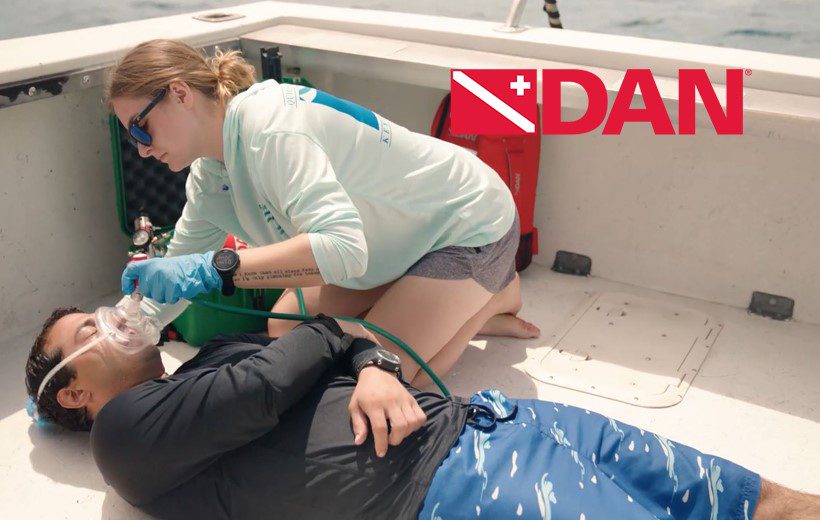
Divers Alert Network® (DAN®), the world’s leading dive safety organization, has launched a new program called Continuing Education for Dive Professionals. This free program focuses on risk mitigation and is now available to all dive professionals via DAN E-Learning. DAN expects this program will not only enhance divers’ safety but will also help reduce dive operators’ liability risk.
 To encourage participation, DAN is offering discounted premiums on individual professional liability and group professional liability insurance to all DAN members who complete the e-learning, which can be done in about an hour.
To encourage participation, DAN is offering discounted premiums on individual professional liability and group professional liability insurance to all DAN members who complete the e-learning, which can be done in about an hour.
Any DAN member who has completed the e-learning will be able to claim a discount of nearly 5% on their annual liability policy. This is in addition to the 5% discount that DAN members already receive. If you are on a group professional liability policy, your completion of the e-learning may count toward a discount on the group professional liability premium.
This year we partnered with Tec Clark to create the content of the program. In the future, we will combine Tec’s material with new material created by DAN.
Click here to learn more and access the e-learning.
To qualify for the discount, the e-learning must be completed before you renew your professional liability insurance policy. Refunds will not be given.
We hope you find this program educational and worthwhile. If you have any questions, or need assistance, please contact DAN at liabilityinsuance@dan.org.
-

 Gear Reviews4 weeks ago
Gear Reviews4 weeks agoGEAR REVIEW – Revolutionising Diving Comfort: The Sharkskin T2 Chillproof Suit
-

 Marine Life & Conservation Blogs3 months ago
Marine Life & Conservation Blogs3 months agoCreature Feature: Swell Sharks
-

 Blogs2 months ago
Blogs2 months agoMurex Resorts: Passport to Paradise!
-

 Blogs3 months ago
Blogs3 months agoDiver Discovering Whale Skeletons Beneath Ice Judged World’s Best Underwater Photograph
-

 News3 months ago
News3 months agoPADI Teams Up with Wellness Brand Neuro to Drive Ocean Change and Create a Blue State of Mind
-

 Marine Life & Conservation3 months ago
Marine Life & Conservation3 months agoSave the Manatee Club launches brand new webcams at Silver Springs State Park, Florida
-

 Blogs2 months ago
Blogs2 months agoSeagrass Awareness Month brings critical food source for Manatees to centre stage
-

 Blogs3 weeks ago
Blogs3 weeks agoDive Indonesia Part 3: Dive into Lembeh Trip Report
















